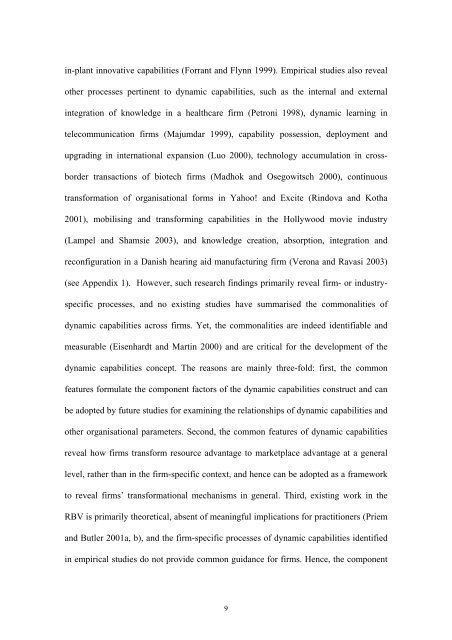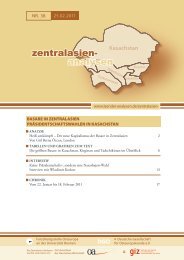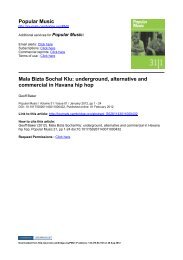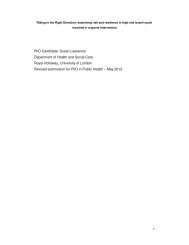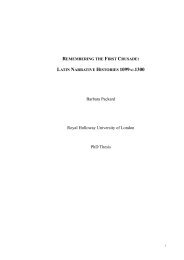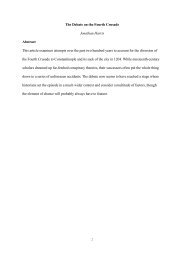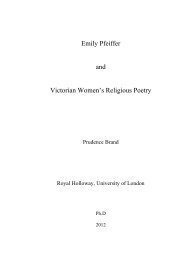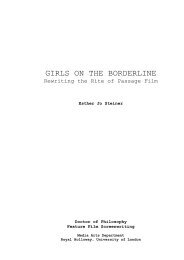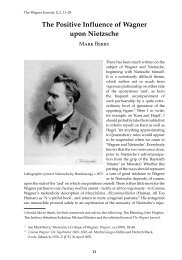Dynamic Capabilities: A Review and Research Agenda
Dynamic Capabilities: A Review and Research Agenda
Dynamic Capabilities: A Review and Research Agenda
Create successful ePaper yourself
Turn your PDF publications into a flip-book with our unique Google optimized e-Paper software.
in-plant innovative capabilities (Forrant <strong>and</strong> Flynn 1999). Empirical studies also reveal<br />
other processes pertinent to dynamic capabilities, such as the internal <strong>and</strong> external<br />
integration of knowledge in a healthcare firm (Petroni 1998), dynamic learning in<br />
telecommunication firms (Majumdar 1999), capability possession, deployment <strong>and</strong><br />
upgrading in international expansion (Luo 2000), technology accumulation in cross-<br />
border transactions of biotech firms (Madhok <strong>and</strong> Osegowitsch 2000), continuous<br />
transformation of organisational forms in Yahoo! <strong>and</strong> Excite (Rindova <strong>and</strong> Kotha<br />
2001), mobilising <strong>and</strong> transforming capabilities in the Hollywood movie industry<br />
(Lampel <strong>and</strong> Shamsie 2003), <strong>and</strong> knowledge creation, absorption, integration <strong>and</strong><br />
reconfiguration in a Danish hearing aid manufacturing firm (Verona <strong>and</strong> Ravasi 2003)<br />
(see Appendix 1). However, such research findings primarily reveal firm- or industry-<br />
specific processes, <strong>and</strong> no existing studies have summarised the commonalities of<br />
dynamic capabilities across firms. Yet, the commonalities are indeed identifiable <strong>and</strong><br />
measurable (Eisenhardt <strong>and</strong> Martin 2000) <strong>and</strong> are critical for the development of the<br />
dynamic capabilities concept. The reasons are mainly three-fold: first, the common<br />
features formulate the component factors of the dynamic capabilities construct <strong>and</strong> can<br />
be adopted by future studies for examining the relationships of dynamic capabilities <strong>and</strong><br />
other organisational parameters. Second, the common features of dynamic capabilities<br />
reveal how firms transform resource advantage to marketplace advantage at a general<br />
level, rather than in the firm-specific context, <strong>and</strong> hence can be adopted as a framework<br />
to reveal firms’ transformational mechanisms in general. Third, existing work in the<br />
RBV is primarily theoretical, absent of meaningful implications for practitioners (Priem<br />
<strong>and</strong> Butler 2001a, b), <strong>and</strong> the firm-specific processes of dynamic capabilities identified<br />
in empirical studies do not provide common guidance for firms. Hence, the component<br />
9


